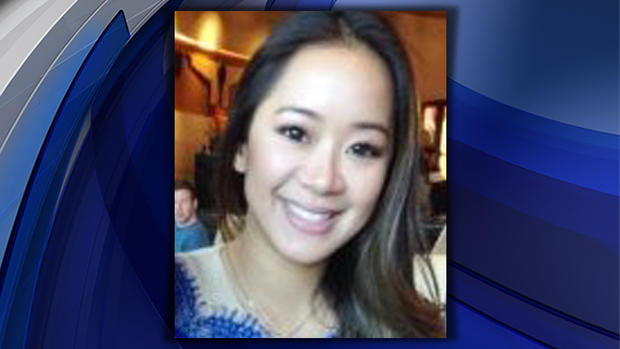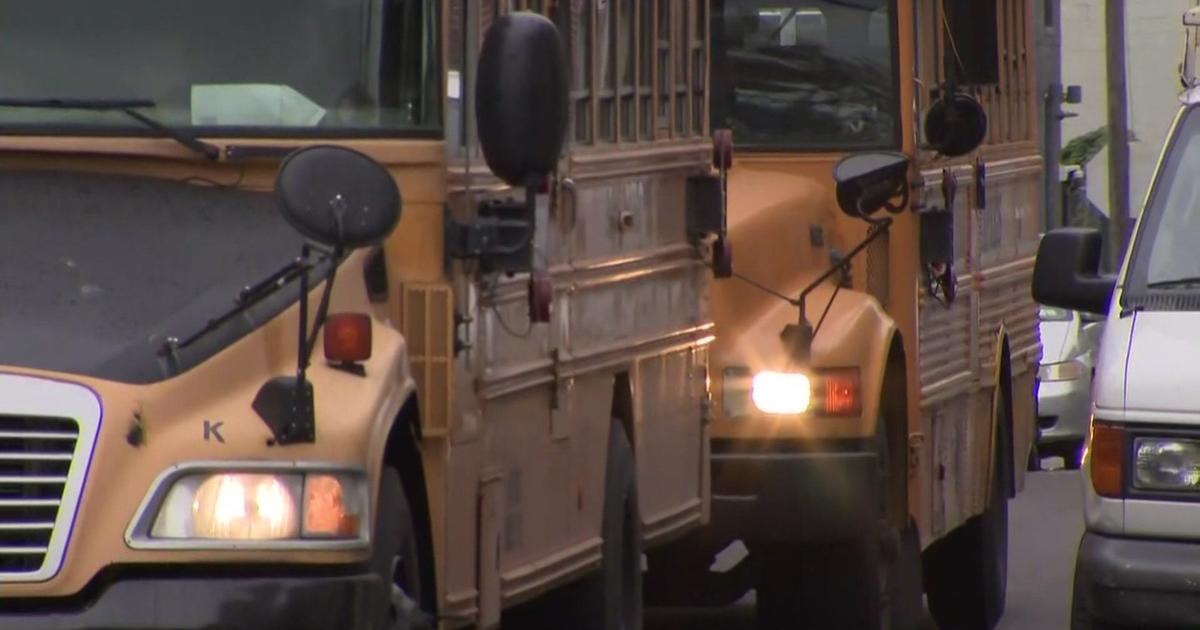Nepal Earthquake Death Toll Climbs Past 3,000
KATHMANDU, Nepal (CBSNewYork/AP) -- Sleeping in the streets and shell-shocked, Nepalese cremated the dead and dug through rubble for the missing Sunday, a day after a massive Himalayan earthquake killed more than 3,000 people. Aftershocks tormented them, making buildings sway and sending panicked Kathmandu residents running into the streets.
The cawing of crows mixed with terrified screams as the worst of the aftershocks -- magnitude 6.7 -- pummeled the capital city. It came as planeloads of supplies, doctors and relief workers from neighboring countries began arriving in this poor Himalayan nation. No deaths or injuries were reported from the early Sunday afternoon quake, but it took an emotional toll.
WEB EXTRA: Nepal Earthquake Photos | Here's How You Can Help
"The aftershocks keep coming --- so people don't know what to expect," said Sanjay Karki, Nepal country head for global aid agency Mercy Corps. "All the open spaces in Kathmandu are packed with people who are camping outdoors. When the aftershocks come, you cannot imagine the fear. You can hear women and children crying.''
Saturday's magnitude 7.8 earthquake spread horror from Kathmandu to small villages and to the slopes of Mount Everest, triggering an avalanche that buried part of the base camp packed with foreign climbers preparing to make their summit attempts. At least 18 people died there and 61 were injured, according to the Nepal Mountaineering Association.
Nepalese Community Comes Together In Queens
Among those killed was Marisa Eve Girawong, of Edison, New Jersey, CBS2's Dave Carlin reported.
Girawong was a physician's assistant at the Mount Everest base camp. The Rutgers University alum also worked as an emergency room physician assistant at East Orange General Hospital.
"Our hearts are broken," a spokesman for her employer in Nepal, Madison Mountaineering, said. "Eve perished in the aftermath of the avalanche. … Our thoughts and prayers are with Eve and her family and friends."
"East Orange General Hospital extends our deepest sympathy and prayers to the people of Nepal and the family of Marisa Eve Girawong who previously worked as a Physician Assistant in our Emergency Room. We are sadden (sic) by the loss of Marissa and the nearly 2,000 people who died as a result of this earthquake that left behind mass devastation and staggering levels of damage," Suzette Robinson, East Orange General Hospital's vice president of external affairs, said in a statement.
Nepal Earthquake Death Toll Climbs Past 2,500
As CBS2's Steve Langford reported, Girawong had recently been appointed to her post at the base camp.
"Had to hike through fresh 12 inch snow, but finally made it safe and sound to my new home for the next 7 weeks, thank goodness for my minus 30 sleeping bag," she wrote on Facebook.
Friends were arriving at her family's Edison home on Sunday, where neighbors were heartbroken over news of the woman's death.
"I feel terrible and my heart goes out to the family," Rahim Merchant said.
"We wish them the best and rest in peace," Steve Wang added.
On Instagram Girawong had commented about conditions at the mountain.
"Just getting used to falling asleep to the sound of avalanches and waking up to helicopters, into the icefall," she said.
In Jackson Heights, Queens, where there is a sizable Nepalese community, a prayer service and donation drive was held Sunday afternoon at Diversity Plaza. A candlelight vigil is planned for 7 p.m., also at Diversity Plaza.
"It's the biggest disaster we ever faced in our history, and it's quite devastating," Rakesh Silwal, who organized the prayer vigil, told WCBS 880's Jim Smith.
As CBS2's Matt Kozar reported, as many mourned, an effort was underway to collect money for recovery efforts.
"We are very far, but we tried to get together and collect some donations. We'll collect whatever we can. At least we can do those things."
Some such as Dristee Shakya are still in disbelief and worried about their families.
"I couldn't sleep," she said. "I was shocked. And the moment you see the pictures, like the crack on the ground and everything, it just breaks your heart."
Everyone she knows survived the quake. She said coming together was more about supporting her country that is in ruins.
"We do need everybody's help," she said. "It's about unity."
Smith was interviewing a man from Nepal, Mohammed Seraj, in Jackson Heights when the man's brother called from Nepal to say he was OK. Smith talked to the brother, who told him it is very difficult to find food and water, and the ground is still shaking from the aftershocks.
Nepalese Community Comes Together In Queens
A 16-year-old girl told 1010 WINS' Derricke Dennis the earthquake's victims include her own relatives.
"Right now, they're struggling, because they're too scared to live in their houses right now," she said. "So they're outside in the streets under a tent."
"A lot of houses are gone," one man said. "So it's quite shocking. It's quite devastating."
On Sunday night, Tsering Thinlay told CBS2's Kozar that she lost her uncle.
"We can't go. There's no road. Nothing. Shortage of helicopters. So many people, they are dying," she said.
Members of the community observed prayers in a Buddhist sanctuary, and pictures of the dead were placed on the altar.
The earthquake centered outside Kathmandu, the capital, was the worst to hit the South Asian nation in over 80 years. It destroyed swaths of the oldest neighborhoods of Kathmandu, and was strong enough to be felt all across parts of India, Bangladesh, China's region of Tibet and Pakistan.
Nepal authorities said Sunday that at least 2,430 people died in that country alone, not including the 18 dead in the avalanche. Another 61 people died from the quake in India and a few in other neighboring countries.
At least 1,152 people died in Kathmandu, and the number of injured nationwide was upward of 5,900. With search and rescue efforts far from over, it was unclear how much the death toll would rise.
But outside of the oldest neighborhoods, many in Kathmandu were surprised by how few modern structures -- the city is largely a collection of small, poorly constructed brick apartment buildings -- collapsed in the quake. While aid workers cautioned that many buildings could have sustained serious structural damage, it was also clear that the death toll would have been far higher had more buildings caved in.
Aid workers also warned that the situation could be far worse near the epicenter. The U.S. Geological Survey said the quake was centered near Lamjung, about 50 miles northwest of Kathmandu, in the Gorkha district.
Roads to that area were blocked by landslides, hindering rescue teams, said chief district official Prakash Subedi. Teams were trekking through mountain trails to reach remote villages, and helicopters would also be deployed, he said by telephone.
Local aid worker Matt Darvas said in a statement issued by his group, World Vision, that he heard that many remote mountain villages near the epicenter may have been completely buried by rock falls.
The villages "are literally perched on the sides of large mountain faces and are made from simple stone and rock construction," Darvas said. ``Many of these villages are only accessible by 4WD and then foot, with some villages hours and even entire days' walks away from main roads at the best of times.''
On Sunday, the Director of Oxfam, an international aid organization, had to cut her interview short because of an aftershock.
"We said first to focus on Kathmandu, because that is something we can handle at the moment. It is trembling. I'm going outside. I'm sorry. Bye," she said amid the aftershock.
Nepal's worst recorded earthquake in 1934 measured 8.0 and all but destroyed the cities of Kathmandu, Bhaktapur and Patan.
With people fearing more quakes, tens of thousands of Nepalese spent Saturday night outside under chilly skies, or in cars and public buses. They were jolted awake by strong aftershocks early Sunday.
"There were at least three big quakes at night and early morning. How can we feel safe? This is never-ending and everyone is scared and worried,'' said Kathmandu resident Sundar Sah. "I hardly got much sleep. I was waking up every few hours and glad that I was alive.''
As day broke, rescuers aided by international teams set out to dig through rubble of buildings -- concrete slabs, bricks, iron beams, wood -- to look for survivors.
In the Kalanki neighborhood of Kathmandu, police rescuers finally extricated a man lying under a dead body, both of them buried beneath a pile of concrete slabs and iron beams. Before his rescue, his family members stood nearby, crying and praying. Police said the man's legs and hips were totally crushed.
Hundreds of people in Kalanki gathered around the collapsed Lumbini Guest House, once a three-story budget hotel and restaurant frequented by Nepalese. They watched with fear and anticipation as a single backhoe dug into the rubble.
Police officer RP Dhamala, who was coordinating the rescue efforts, said they had already pulled out 12 people alive and six dead. He said rescuers were still searching for about 20 people believed to be trapped, but had heard no cries, taps or noises for a while.
Most areas were without power and water. The United Nations said hospitals in the Kathmandu Valley were overcrowded, and running out of emergency supplies and space to store corpses.
Plumes of smoke, meanwhile, rose above the capital as friends, relatives and others gathered by the river to quickly cremate loved ones' remains.
Most shops in Kathmandu were shut; only fruit vendors and pharmacies seemed to be doing business.
"More people are coming now,'' fruit seller Shyam Jaiswal said. "They cannot cook so they need to buy something they can eat raw.''
Jaiswal said stocks were running out, and more shipments were not expected for at least a week, but added, ``We are not raising prices. That would be illegal, immoral profit.''
The quake will likely put a huge strain on the resources of this impoverished country best known for Everest, the highest mountain in the world. The economy of Nepal, a nation of 27.8 million people, relies heavily on tourism, principally trekking and Himalayan mountain climbing.
With Kathmandu airport reopened, the first aid flights began delivering aid supplies. The first to respond were Nepal's neighbors -- India, China and Pakistan, all of which have been jockeying for influence over the landlocked nation. Nepal remains closest to India, with which it shares deep political, cultural and religious ties.
India suffered its own losses from the quake, with at least 61 people killed there and dozens injured. Sunday's aftershock was also widely felt in the country, and local news reports said metro trains in New Delhi and Kolkata were briefly shut down when the shaking started.
Other countries sending support Sunday included the United Arab Emirates, Germany and France.
After the chaos of Saturday -- when little organized rescue and relief was seen -- there was more order on Sunday as rescue teams fanned out across the city.
Workers were sending out tents and relief goods in trucks and helicopters and setting up shelters, said disaster management official Rameshwar Dangal. Mukesh Kafle, the head of the Nepal Electricity Authority, said power was restored to main government offices, the airport and hospitals.
Among the destroyed buildings in Kathmandu was the nine-story Dharahara Tower, a Kathmandu landmark built by Nepal's royal rulers as a watchtower in the 1800s and a UNESCO-recognized historical monument. It was reduced to rubble and there were reports of people trapped underneath.
The Kathmandu Valley is listed as a World Heritage site. The Buddhist stupas, public squares and Hindu temples are some of the most well-known sites in Kathmandu, and now some of the most deeply mourned.
Nepali journalist and author Shiwani Neupane tweeted: "The sadness is sinking in. We have lost our temples, our history, the places we grew up."
In addition to Girawong, two other Americans were killed.
Google executive Dan Fredinburg, 33, was killed while climbing Mt. Everest, and California filmmaker Tom Taplin, 61, was killed while shooting a documentary.
Taplin's widow said she received the news from a guide who was hired to take her husband and a photographer up the mountain.
(TM and © Copyright 2015 CBS Radio Inc. and its relevant subsidiaries. CBS RADIO and EYE Logo TM and Copyright 2015 CBS Broadcasting Inc. Used under license. All Rights Reserved. This material may not be published, broadcast, rewritten, or redistributed. The Associated Press contributed to this report.)





